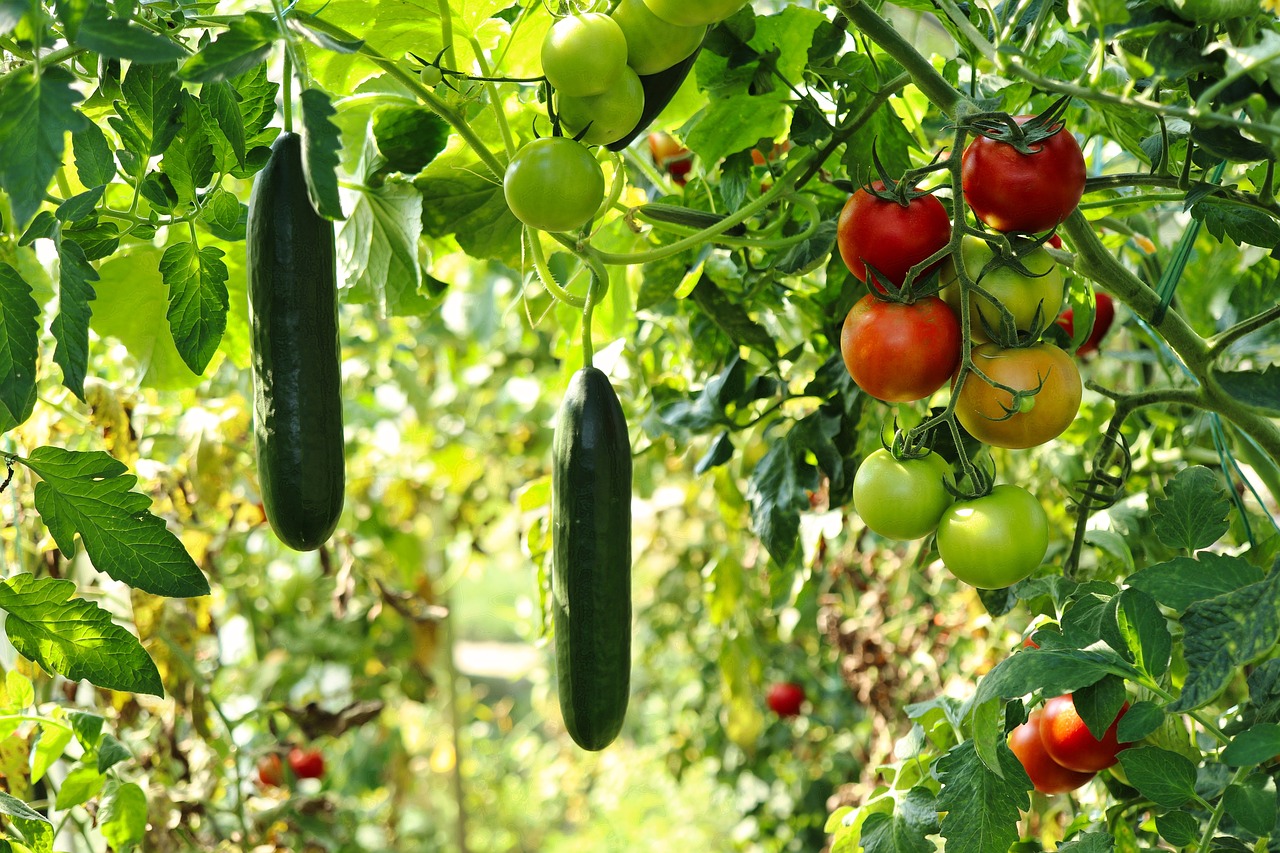Welcome to the wonderful world of gardening! Growing your own food is an incredibly rewarding experience, offering fresh, delicious vegetables and the satisfaction of nurturing life from seed to harvest. However, if you’re new to gardening, the sheer number of options can be overwhelming. Don’t worry, because this guide is here to help!
The Right Start for New Gardeners
Beginner gardening is all about setting yourself up for success. Choosing the right vegetables to grow plays a crucial role in this. Here, we’ll focus on cool-season and warm-season vegetables to make things easier. Cool-season veggies can tolerate cooler temperatures and even a light frost, allowing for earlier planting in spring and potentially a fall harvest. Warm-season vegetables, on the other hand, thrive in warmer weather and should be planted after the last frost in spring.
Now, let’s highlight our top picks for the 11 easiest vegetables to grow, perfect for beginner gardeners!
1. Lettuce: The Speedy Salad Staple (Cool-Season)

Benefits of Growing: Lettuce is a versatile salad green packed with vitamins and minerals. It’s perfect for adding a fresh, crisp element to any meal. Plus, you can harvest it multiple times throughout the growing season!
Planting Tips:
- Season to Plant: Early spring and fall.
- Sun Requirements: Partial to full sun.
- Spacing Recommendations: 6-8 inches apart.
- Seed Starting vs. Transplanting: Both work well. Lettuce seeds germinate quickly, so direct sowing is a good option. However, starting seeds indoors 4-6 weeks before the last frost gives you a head start.
Care Tips:
- Watering Needs: Keep the soil evenly moist, but not soggy.
- Common Pests/Diseases: Watch out for slugs and aphids. You can deter slugs with crushed eggshells or beer traps. For aphids, a strong blast of water or insecticidal soap spray can help.
- Harvesting: Pick individual outer leaves as needed throughout the season. This encourages continued growth.
2. Radishes: The Zippy and Fast Favorite (Cool-Season)

Benefits of Growing: Radishes add a delightful peppery bite to salads, sandwiches, and more. They’re also a great source of vitamins and fiber. Plus, they grow incredibly fast!
Planting Tips:
- Season to Plant: Early spring and fall.
- Sun Requirements: Full sun is ideal.
- Spacing Recommendations: 1-2 inches apart.
- Seed Starting vs. Transplanting: Direct sow seeds outdoors 4-6 weeks before the last frost.
Care Tips:
- Watering Needs: Keep the soil consistently moist, especially during hot weather.
- Common Pests/Diseases: Flea beetles can munch on leaves. Use row covers or netting to protect your radishes.
- Harvesting: Radishes are ready when the bulb reaches your desired size, usually within 3-4 weeks of planting.
3. Herbs: Flavorful Friends for Every Dish (Varies)
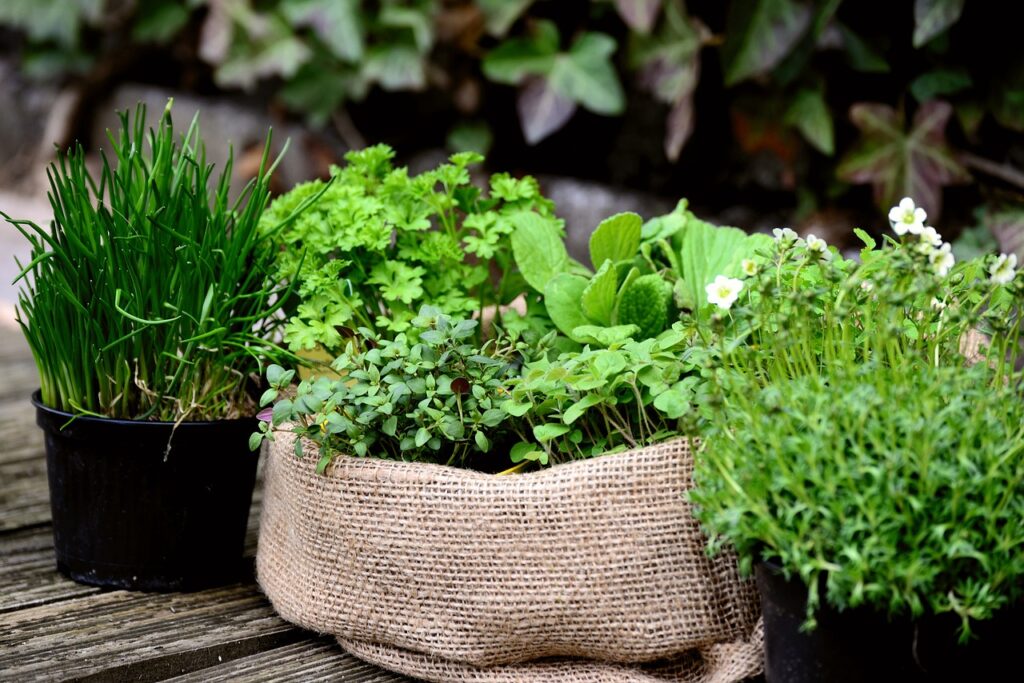
Benefits of Growing: Fresh herbs elevate any dish with their vibrant flavors and aromas. Having a steady supply of homegrown herbs at your fingertips is a true game-changer in the kitchen!
Planting Tips:
- Season to Plant: Varies depending on the herb. Some herbs, like basil, prefer warm weather, while others, like parsley, tolerate cooler temperatures. Research the specific needs of your chosen herb.
- Sun Requirements: Most herbs need at least 6-8 hours of sunlight daily.
- Spacing Recommendations: Refer to the specific herb’s planting recommendations for spacing.
- Seed Starting vs. Transplanting: You can start most herbs indoors 4-6 weeks before the last frost and transplant them outdoors later. Alternatively, some herbs can be directly sown outdoors depending on the climate and season.
Care Tips:
- Watering Needs: Watering requirements vary by herb. Some, like basil, need consistent moisture, while others, like rosemary, are more drought-tolerant. Research your herb’s specific watering needs.
- Common Pests/Diseases: Aphids and fungal diseases can be issues. Regularly check your herbs and use insecticidal soap spray or neem oil for pest control if needed.
- Harvesting: Harvest leaves regularly throughout the growing season to encourage new growth. Pinch off stems just above a leaf node for a clean cut.
4. Spinach: The Powerhouse Green (Cool-Season)
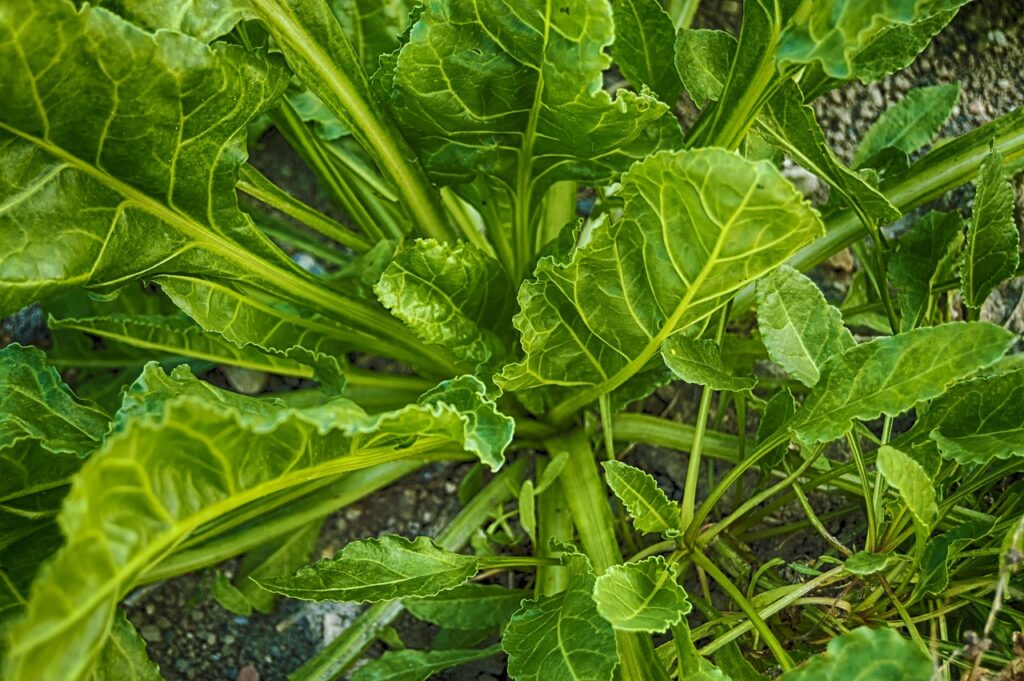
Benefits of Growing: Spinach is a nutritional powerhouse, packed with vitamins, minerals, and antioxidants. It’s incredibly versatile, perfect for salads, smoothies, stir-fries, and more.
Planting Tips:
- Season to Plant: Early spring and fall.
- Sun Requirements: Prefers full sun to partial shade.
- Spacing Recommendations: 4-6 inches apart.
- Seed Starting vs. Transplanting: You can directly sow seeds outdoors 4-6 weeks before the last frost. Alternatively, start seeds indoors 3-4 weeks before transplanting outdoors.
Care Tips:
- Watering Needs: Keep the soil evenly moist, but not soggy. Spinach thrives in cool weather, so avoid letting the soil dry out completely.
- Common Pests/Diseases: Watch out for slugs and powdery mildew. Use crushed eggshells or beer traps for slugs, and practice good air circulation to prevent mildew.
- Harvesting: Harvest individual outer leaves as needed throughout the growing season. This encourages continued growth. You can also harvest entire plants when they reach maturity.
5. Peas: The Sweet and Nutritious Treat (Cool-Season)

Benefits of Growing: Peas are a delightful addition to your garden, offering both delicious fresh pods and sweet, plump peas. They’re a good source of protein and fiber.
Planting Tips:
- Season to Plant: Early spring as soon as the soil can be worked.
- Sun Requirements: Full sun is ideal.
- Spacing Recommendations: Depends on the pea variety. Bush peas need 2-3 inches between plants, while vining peas need support structures (trellis, fence) and spacing of 4-6 inches.
- Seed Starting vs. Transplanting: Peas can be directly sown outdoors 4-6 weeks before the last frost.
Care Tips:
- Watering Needs: Keep the soil consistently moist, especially during pod development.
- Common Pests/Diseases: Aphids and powdery mildew can be problems. Use insecticidal soap spray for aphids and practice good air circulation to prevent mildew.
- Harvesting: Harvest pea pods when they are plump and the peas inside are well-developed. You can test by shelling one pod – the peas should be sweet and slightly firm.
6. Zucchini: The Prolific Summer Squash (Warm-Season)

Benefits of Growing: Zucchini is a prolific summer squash that offers a delicious and versatile harvest. You can enjoy it grilled, roasted, stuffed, or even spiralized for a healthy pasta substitute.
Planting Tips:
- Season to Plant: After the last frost in spring when soil temperatures are warm.
- Sun Requirements: Full sun is ideal.
- Spacing Recommendations: 3-4 feet apart.
- Seed Starting vs. Transplanting: You can directly sow seeds outdoors after the last frost, or start seeds indoors 2-3 weeks before transplanting outdoors.
Care Tips:
- Watering Needs: Water deeply and regularly, especially during hot weather. Aim for consistent moisture without soggy soil.
- Common Pests/Diseases: Squash bugs and powdery mildew can be issues. Handpick squash bugs or use insecticidal soap spray. Practice good air circulation and watering practices to prevent mildew.
- Harvesting: Harvest zucchini when fruits are firm and reach a desirable size, usually within 6-8 weeks of planting. Pick them regularly to encourage continued production.
7. Tomatoes: The Rewarding Summer Staple (Warm-Season)

Benefits of Growing: There’s nothing quite like the taste of a homegrown tomato! They are incredibly flavorful and versatile, perfect for salads, sandwiches, sauces, and more. While tomatoes require a bit more attention than some other vegetables on this list, the rewards are well worth the effort.
Planting Tips:
- Season to Plant: After the last frost in spring when soil temperatures are warm.
- Sun Requirements: Full sun is essential for optimal fruit production.
- Spacing Recommendations: 2-3 feet apart.
- Seed Starting vs. Transplanting: Starting seeds indoors 6-8 weeks before the last frost is recommended for tomatoes. Transplant outdoors after the last frost has passed.
Care Tips:
- Watering Needs: Water deeply and regularly, allowing the soil to dry slightly between waterings. Avoid overhead watering to prevent fungal diseases.
- Common Pests/Diseases: Tomato hornworms, aphids, and blossom end rot are common challenges. Handpick hornworms or use insecticidal soap spray for aphids. Blossom end rot is caused by calcium deficiency. Ensure consistent watering and consider adding crushed eggshells around the base of the plant for extra calcium.
- Harvesting: Tomatoes are ready to harvest when they turn from green to their mature color (red, yellow, orange, etc.) and feel slightly soft when gently squeezed. Pick them with the stem attached, and enjoy the fruits of your labor!
8. Beans: The Versatile and Nitrogen-Fixing Favorite (Cool-Season and Warm-Season)
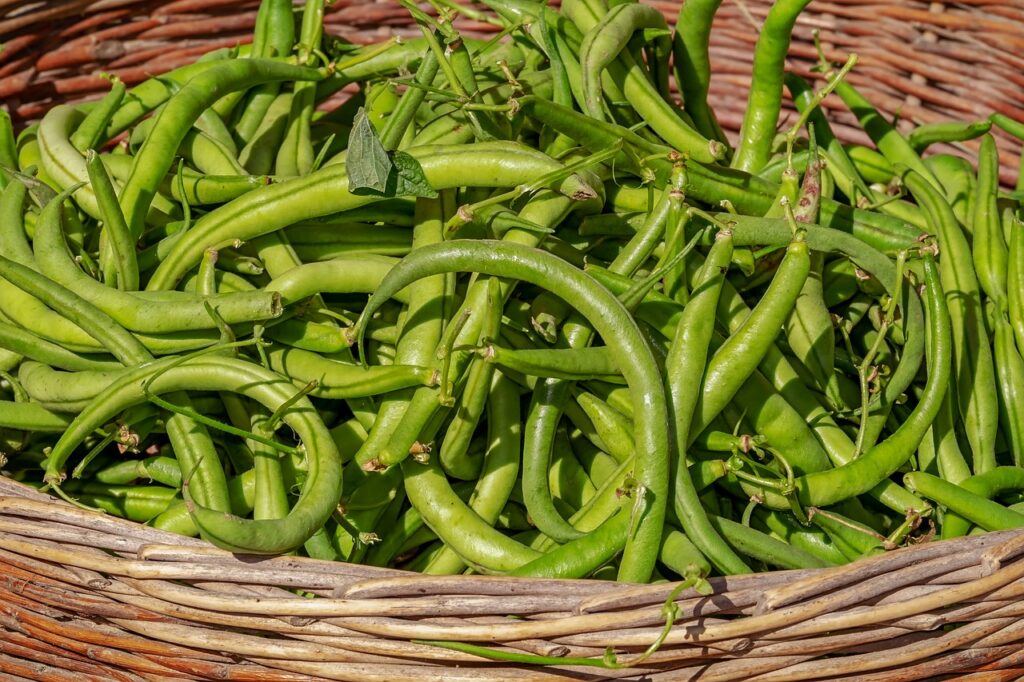
Benefits of Growing: Beans come in a variety of types, from snap beans and green beans to shelling beans and lima beans. They’re a great source of protein and fiber, and nitrogen-fixing legumes that enrich the soil for future plantings.
Planting Tips:
- Season to Plant: Varies depending on the bean type. Cool-season beans like snap peas can be planted early spring and fall, while warm-season beans like green beans prefer warmer soil temperatures after the last frost.
- Sun Requirements: Full sun is ideal.
- Spacing Recommendations: Depends on the bean variety. Bush beans need 2-3 inches between plants, while vining beans need support structures (trellis, fence) and spacing of 4-6 inches.
- Seed Starting vs. Transplanting: Both work well for beans. You can directly sow seeds outdoors or start seeds indoors 2-3 weeks before transplanting outdoors.
Care Tips:
- Watering Needs: Water deeply and regularly, especially during pod development. Aim for consistent moisture without soggy soil.
- Common Pests/Diseases: Aphids and bean beetles can be problems. Use insecticidal soap spray for aphids and handpick or use neem oil spray for bean beetles.
- Harvesting: Harvest bean pods when they are firm and have reached a desirable size. Pick them regularly to encourage continued production.
9. Kale: The Nutrient-Packed Superfood (Cool-Season)
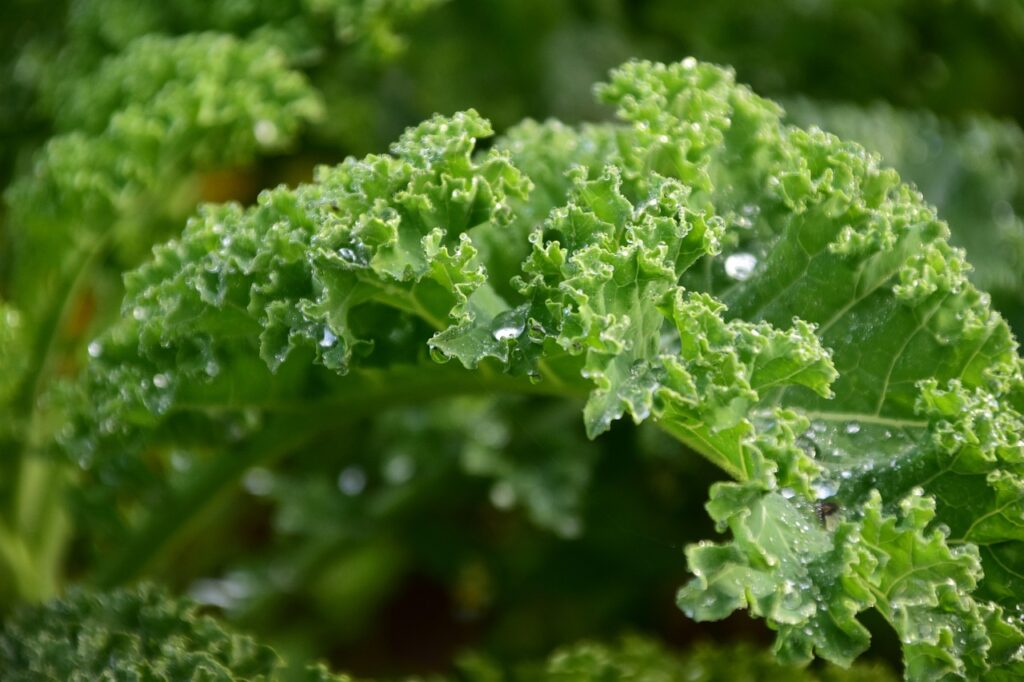
Benefits of Growing: Kale is a nutritional powerhouse, loaded with vitamins, minerals, and antioxidants. It’s incredibly versatile, perfect for salads, smoothies, stir-fries, and more.
Planting Tips:
- Season to Plant: Early spring and fall. Kale can even tolerate light frost.
- Sun Requirements: Full sun to partial shade.
- Spacing Recommendations: 12-18 inches apart.
- Seed Starting vs. Transplanting: You can directly sow seeds outdoors 4-6 weeks before the last frost, or start seeds indoors 4-6 weeks before transplanting outdoors.
Care Tips:
- Watering Needs: Water regularly, allowing the soil to dry slightly between waterings.
- Common Pests/Diseases: Watch out for aphids and cabbage worms. Use insecticidal soap spray for aphids and handpick or use neem oil spray for cabbage worms.
- Harvesting: You can start harvesting outer leaves as needed throughout the growing season. Kale is a cut-and-come-again crop, so enjoy fresh leaves all season long.
10. Cucumbers: The Refreshing Summer Vine (Warm-Season)

Benefits of Growing: Cucumbers are refreshing and hydrating, perfect for salads, sandwiches, or simply enjoyed on their own. There are many varieties to choose from, offering different sizes, shapes, and flavors.
Planting Tips:
- Season to Plant: After the last frost in spring when soil temperatures are warm.
- Sun Requirements: Full sun is ideal.
- Spacing Recommendations: 3-4 feet apart.
- Seed Starting vs. Transplanting: You can directly sow seeds outdoors after the last frost, or start seeds indoors 2-3 weeks before transplanting outdoors.
Care Tips:
- Watering Needs: Water deeply and regularly, especially during hot weather. Aim for consistent moisture without soggy soil.
- Common Pests/Diseases: Squash bugs and powdery mildew can be issues. Handpick squash bugs or use insecticidal soap spray. Practice good air circulation and watering practices to prevent mildew.
- Harvesting: Harvest cucumbers when they reach a desirable size and feel firm to the touch. Pick them regularly to encourage continued production.
11. Bell Peppers: The Colorful and Flavorful Addition (Warm-Season)
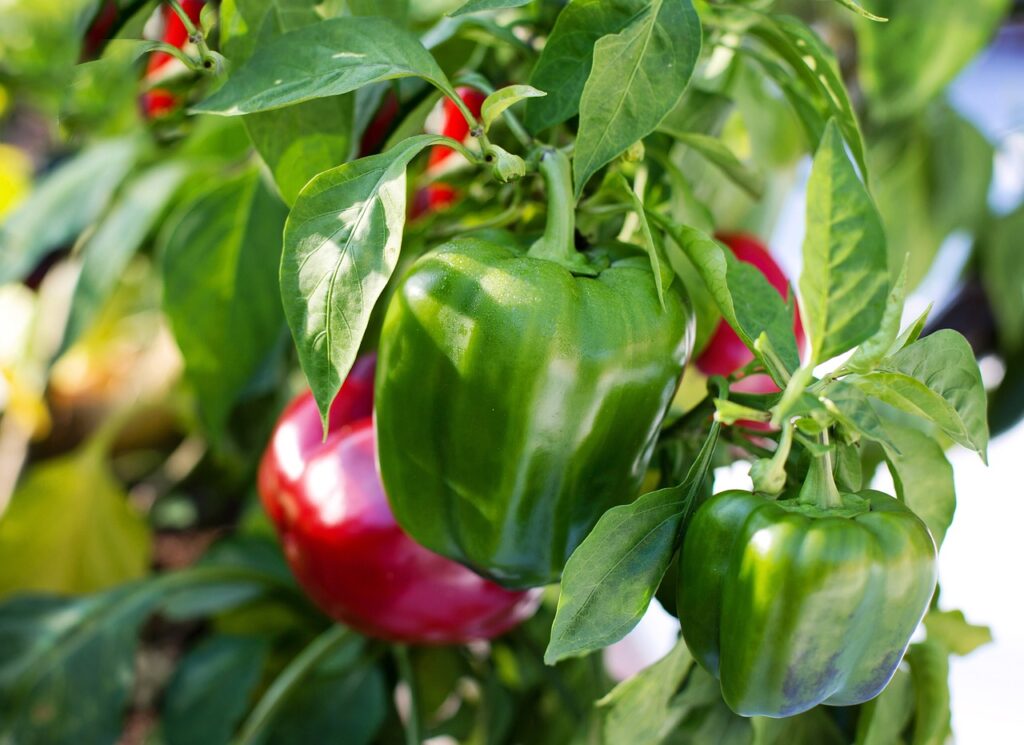
Benefits of Growing: Bell peppers add vibrant color and a delightful crunch to salads, stir-fries, and countless other dishes. They come in various colors (red, yellow, orange, green), each offering slightly different flavor profiles.
Planting Tips:
- Season to Plant: After the last frost in spring when soil temperatures are warm.
- Sun Requirements: Full sun is essential for optimal fruit production.
- Spacing Recommendations: 18-24 inches apart.
- Seed Starting vs. Transplanting: Starting seeds indoors 6-8 weeks before the last frost is recommended for peppers. Transplant outdoors after the last frost has passed.
Care Tips:
- Watering Needs: Water deeply and regularly, allowing the soil to dry slightly between waterings. Avoid overhead watering to prevent fungal diseases.
- Common Pests/Diseases: Aphids and blossom end rot are common challenges. Use insecticidal soap spray for aphids. Blossom end rot is caused by calcium deficiency. Ensure consistent watering and consider adding crushed eggshells around the base of the plant for extra calcium.
- Harvesting: Bell peppers are ready to harvest when they reach their full size and desired color. They can be picked slightly green and ripen off the vine if needed. Pick them with the stem attached, and enjoy the fruits (or should we say, peppers) of your labor!
Troubleshooting Tips for Beginner Gardeners
Even the most dedicated gardeners encounter challenges. Here are some common mistakes beginners make and how to avoid them:
- Overwatering: This can lead to root rot. Water deeply but infrequently, allowing the soil to dry slightly between waterings.
- Underwatering: Plants need consistent moisture, especially during hot weather. Wilting leaves are a sign of underwatering. Adjust your watering schedule accordingly.
- Planting too close together: Refer to the specific spacing recommendations for each vegetable to ensure proper air circulation and growth.
- Not providing enough sunlight: Most vegetables need at least 6-8 hours of sunlight daily. Choose a planting location that receives adequate sun exposure.
- Forgetting to fertilize: While some vegetables don’t require heavy feeding, a balanced fertilizer can give your plants a boost. Research the specific needs of your chosen vegetables.
Reap the Rewards of Your Garden
Gardening is a journey of learning and discovery. These 11 vegetables are a fantastic starting point for beginner gardeners. With a little planning, care, and these helpful tips, you’ll be enjoying the bounty of your own vegetable garden in no time. Remember, gardening is about the process as much as the product. Take time to appreciate the miracle of growth, nurture your plants, and celebrate your harvest.

